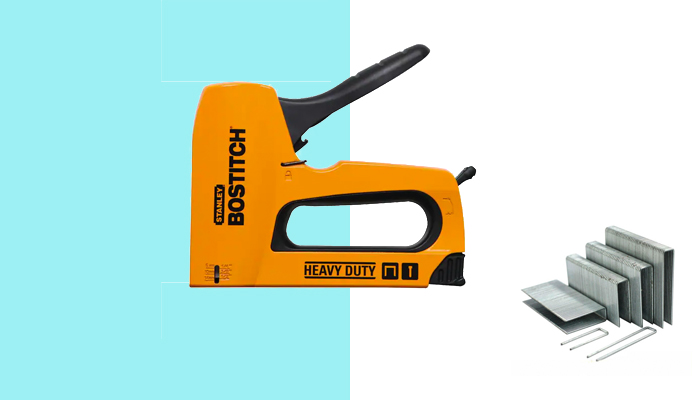Bostitch staple guns can be used to load both heavy-duty and standard-sized staples. Bostitch staple guns are either pneumatic or manual. Therefore, before you load your staple gun, it is essential to understand if it is either manual or pneumatic. Additionally, if your staple gun is pneumatic, ensure that you have appropriately powered off your staple gun from the source of energy.
If your Bostitch staple gun has run out of staples, you will be required to learn how to put staples in the tool before you tackle your projects. Whether your Bostitch staple gun is a heavy-duty model or a handheld stapler, loading is simple and quick.
Standard Sized Bostitch staple Gun Basics
- To understand how you can load a standard-sized Bostitch staple gun, here are the steps you need to follow:
- Grasp the top arm of the staple gun that is situated over the metal carrying tray. Instructions from the company indicate that you need to hold the bottom of the staple gun using your free hand.
- Pull the arm upwards to ensure that the hinge is open. The hinge holds the staple gun over the carrying tray.
- Push the arm back until the tension on the hinge is relieved and the carrying tray is fully exposed. Make sure that the carrying tray is free of spent staples or debris. You can use a can of compressed air to blow the carrying tray. Staple fragments can lead to jamming when you want to use the staple gun.
- Slide a sleeve of staples into the magazine and ensure that the legs are facing downwards.
- Close the staple gun over the carrying tray. As you are moving the arm to close the staple gun down, you will realize that there is a tension of the hinge return.
- Test the staple gun to ascertain that it is loaded correctly. You can use scrap paper before you are sure that you can use it on your projects
Heavy Duty Bostitch Staple Gun Basics
- Loading a heavy-duty Bostitch Staple Gun is different from loading a standard-sized Bostitch staple gun. Here are the steps to follow:
- Locate the follow block release clip at the rear base of the Bostitch staple gun. The follow block is a rod mechanism that pushes staples toward the front of the magazine. The follow block is normally situated in a cradle beneath the arm of the staple gun.
- Push in the clip while at the same time pulling the block out and away from the arm of the staple gun and the magazine. The magazine will be exposed after the follow block has been removed
- Ensure that the magazine is free of any broken staples or debris. Clear the magazine using several bursts of compressed air to ascertain that there is no remaining debris
- Place a sleeve of heavy-duty staples into the magazine, with the legs facing down. You do not have to worry because many Bostitch models come with a visual aid near the tray or are printed to make loading easier
- Replace the follow block in the cradle and depress the top until the springs start to compress. You should compress on the block until it fits into the cradle and clicks into place
- Test out the firing of the staple gun on a scrap material
Tips when loading a Bostitch staple gun
Loading a Bostitch staple gun should not be too tricky once you understand how your stapler works. Here are some safety tips when loading a staple gun:
- Ensure that you are mindful of your safety and keep children away from the stapler while you are loading staples.
- Never place your hand beneath the arm of the stapler when using it
- Never use a jammed staple gun or the one you think might be jammed. Bostitch indicates that some models are easy to remove from jamming. All you need to do is manually remove the staples by opening the magazine
Final Thoughts
When buying replacement staples, ensure that you choose the correct gauge for your Bostitch staple gun. If the staples are too big they can cause jamming and if they are too small you will not be able to load them. Also, too small staples for your staple gun might slip through the holes on your staple gun without doing what they are intended to do.

How to load my bostitch model B8 Plier STCR 2115 1/4 & 3/8